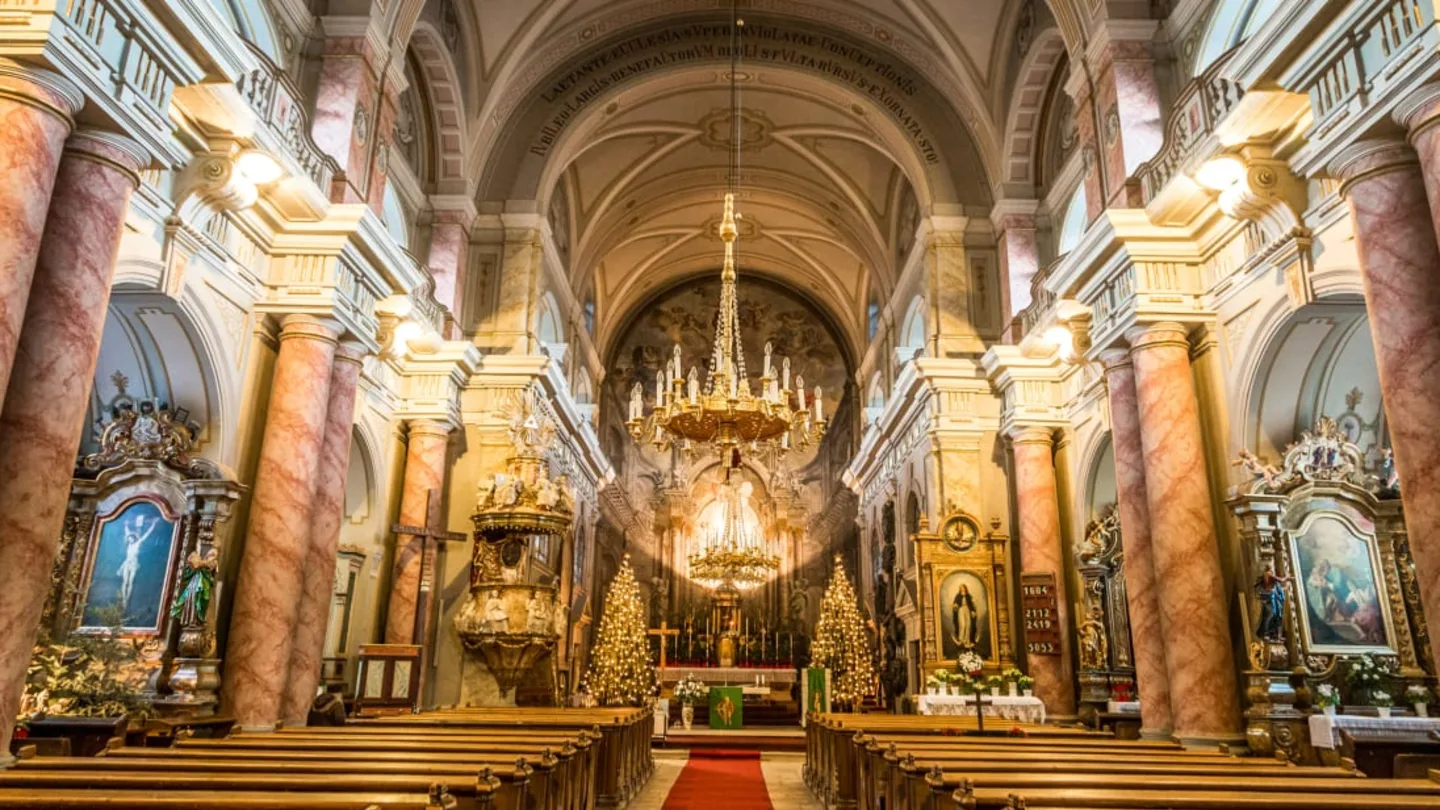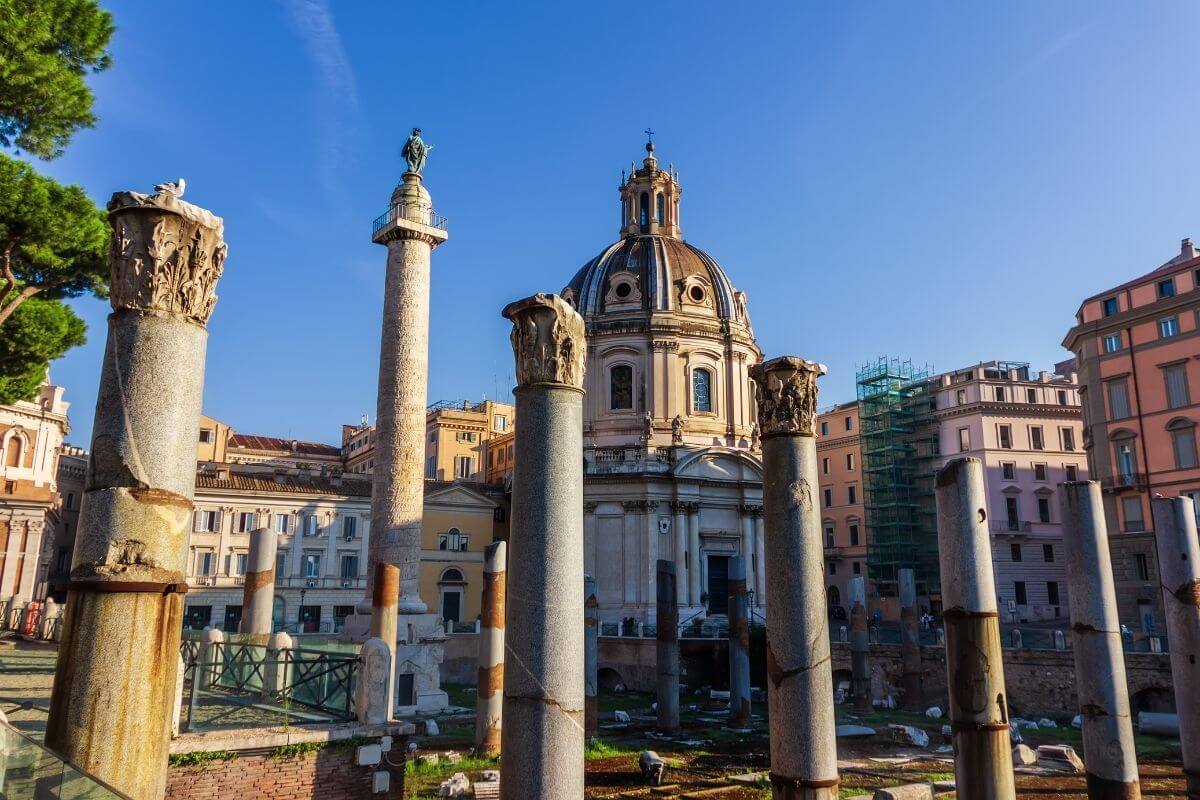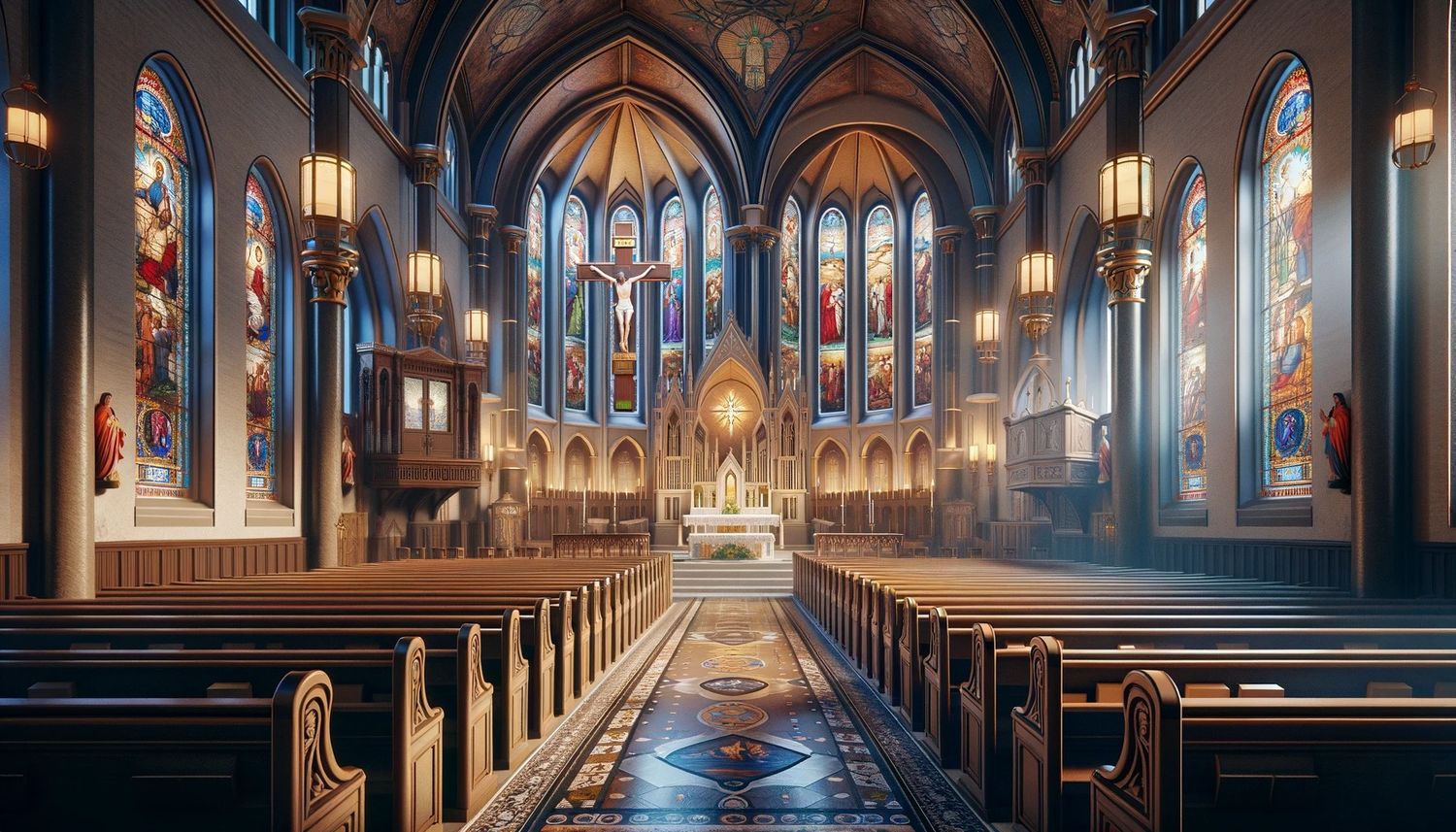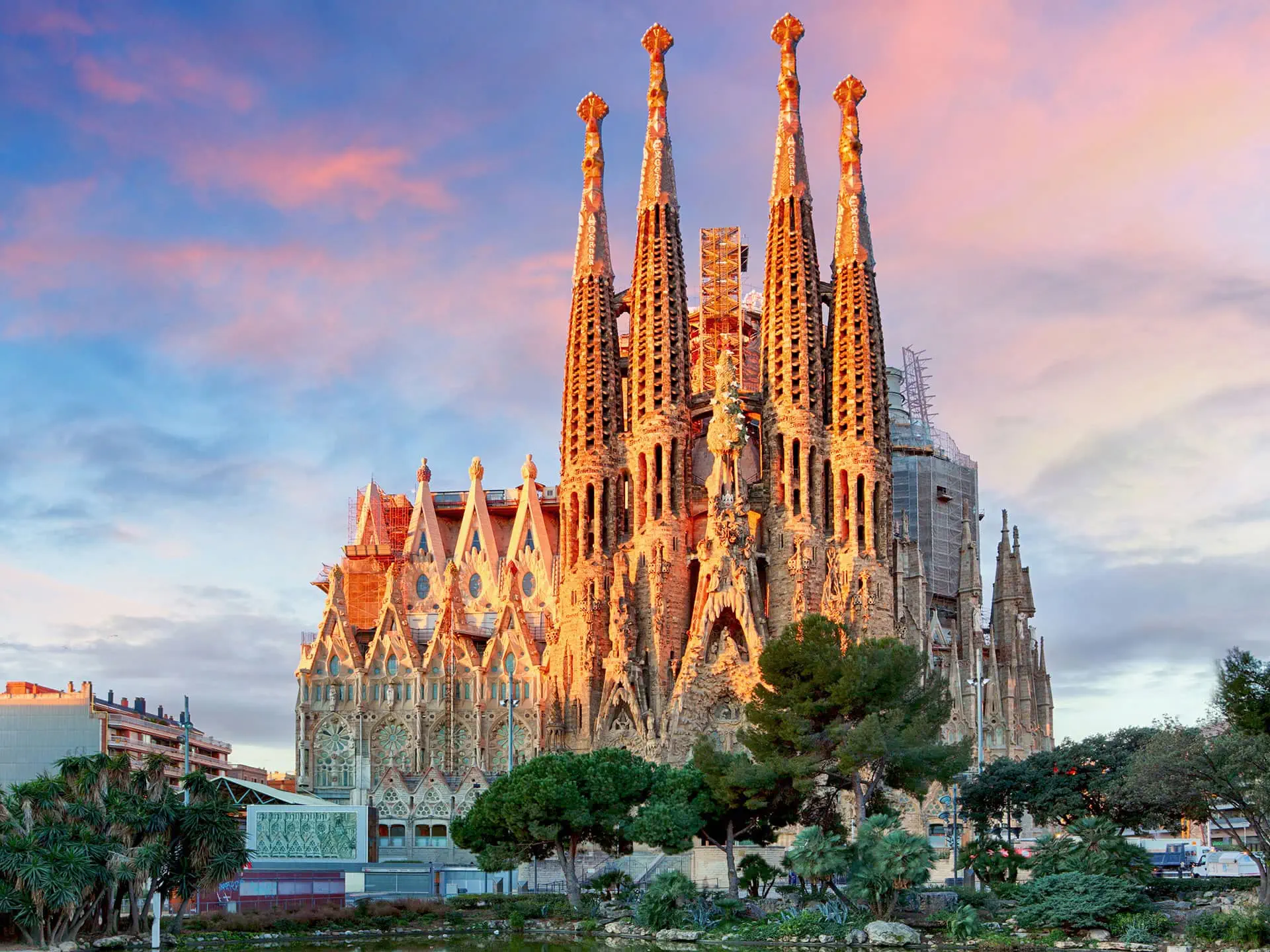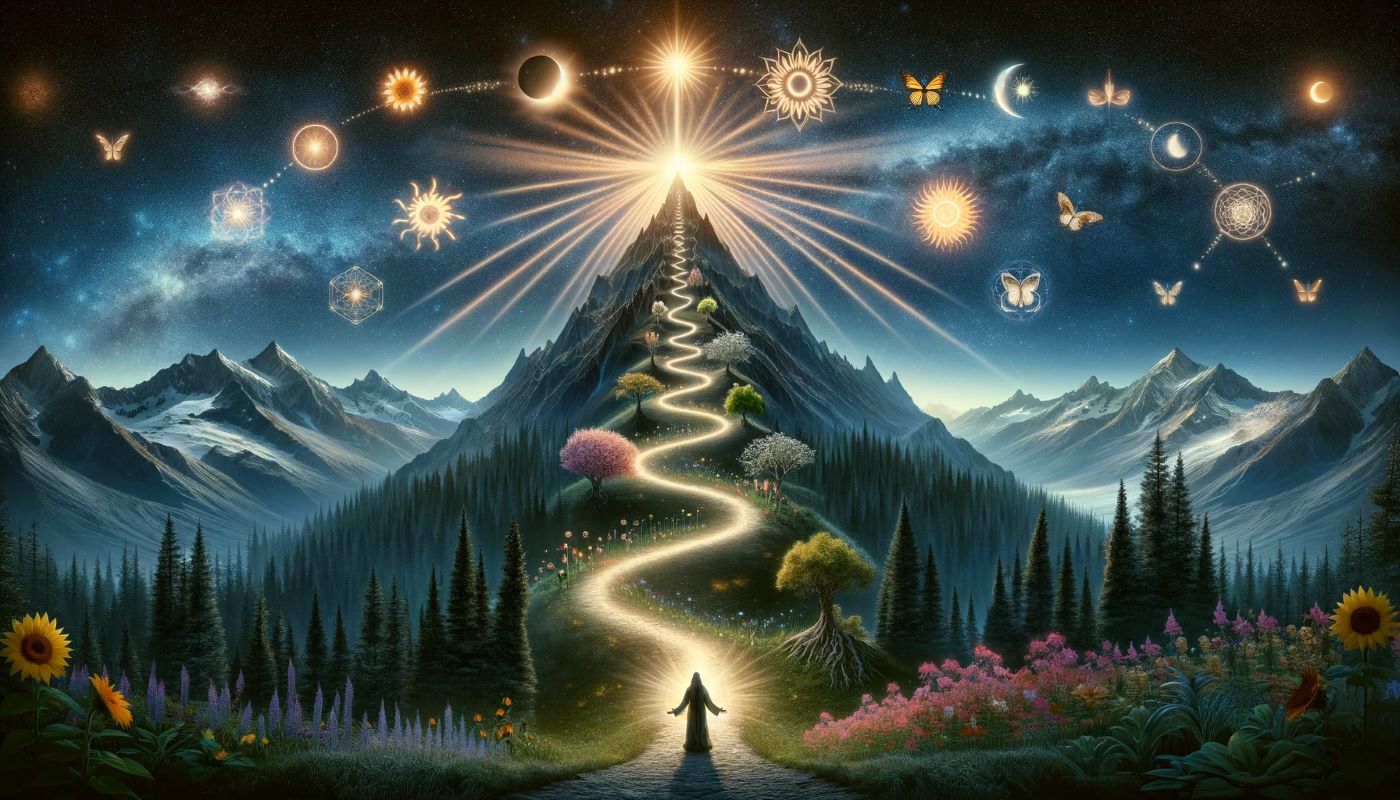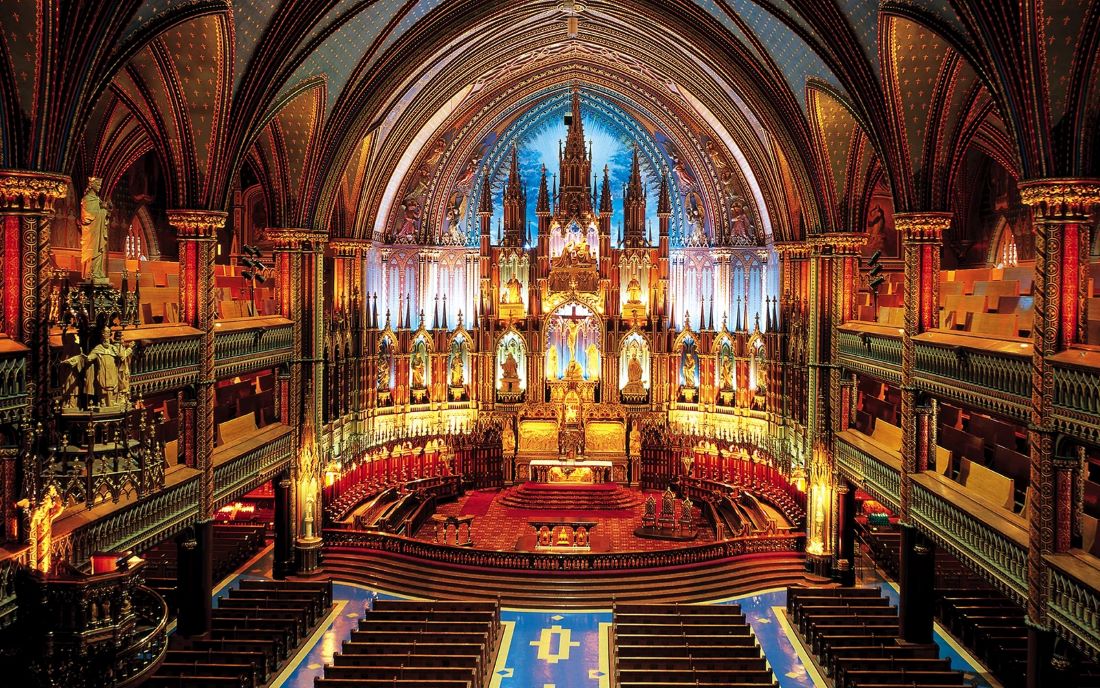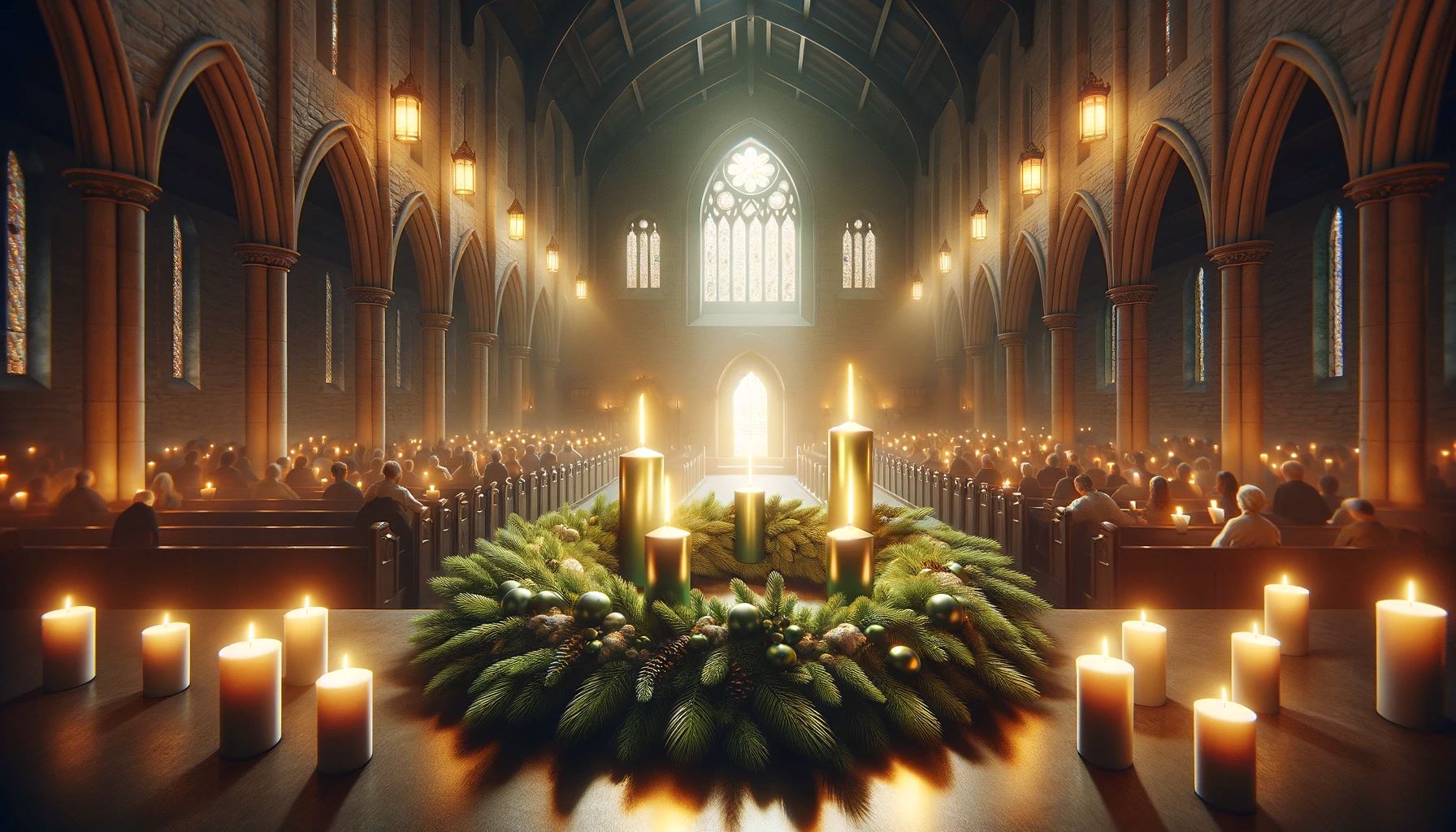Home>Arts and Culture>What Is The Meaning Of Basilica
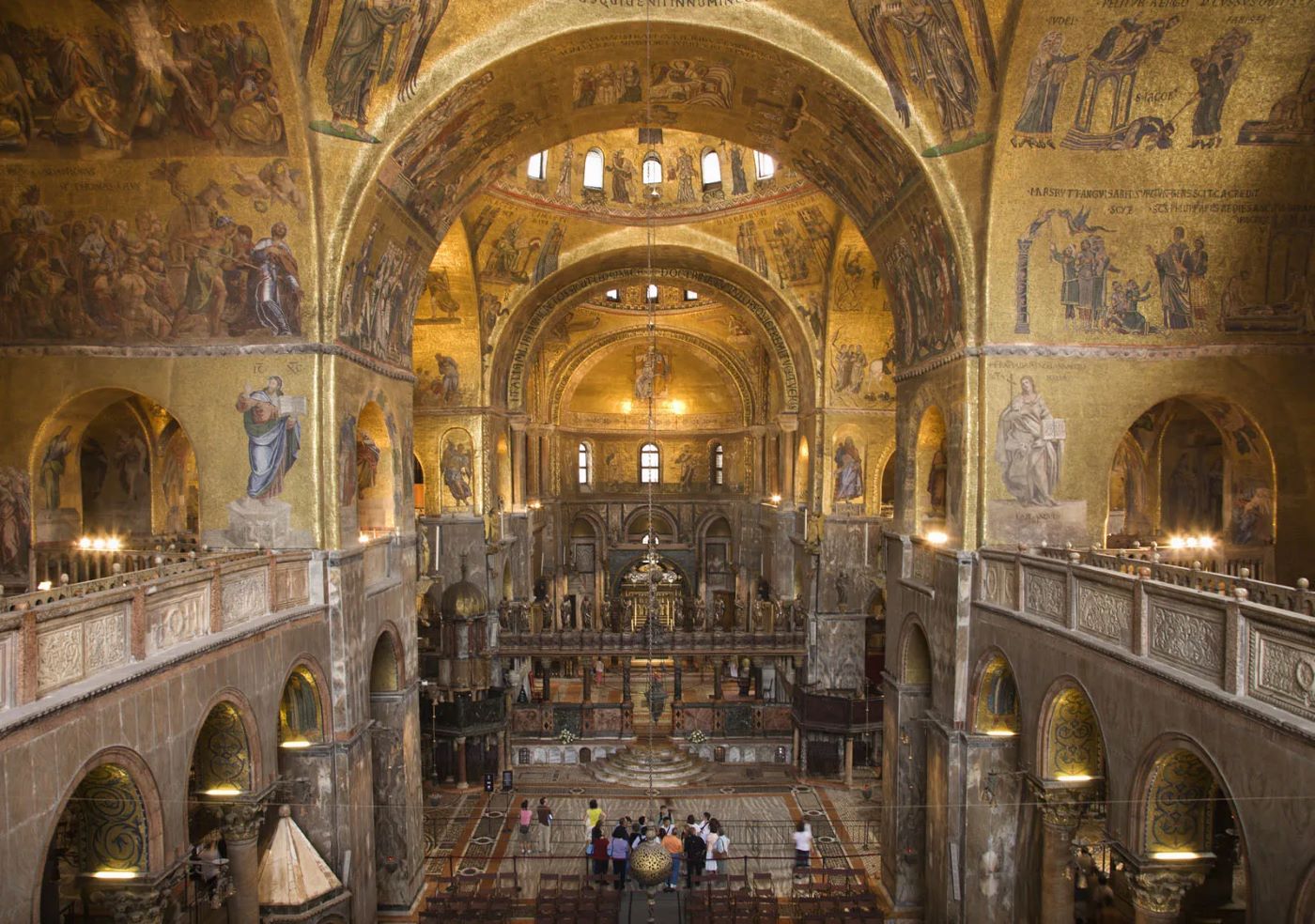

Arts and Culture
What Is The Meaning Of Basilica
Published: February 11, 2024
Peter Smith, Editorial Director at Christian.net, combines deep insights into faith, politics, and culture to lead content creation that resonates widely. Awarded for his contributions to religious discourse, he previously headed a major organization for religious communicators, enhancing dialogue on faith's societal impacts.
Discover the rich history and significance of basilicas in art and culture. Explore the meaning and architectural beauty of these iconic structures.
(Many of the links in this article redirect to a specific reviewed product. Your purchase of these products through affiliate links helps to generate commission for Christian.net, at no extra cost. Learn more)
Table of Contents
Introduction
Basilicas have long stood as architectural marvels, embodying rich historical significance and religious importance. These grand structures have captivated the hearts and minds of people for centuries, serving as centers of faith, culture, and community. From their origins in ancient Rome to their global presence today, basilicas continue to inspire awe and reverence.
The term "basilica" originates from the ancient Greek word "basilike," meaning "royal." Initially, basilicas were public buildings in ancient Rome, serving as centers for commerce, administration, and justice. Over time, these structures evolved to become integral to the Christian faith, with basilicas serving as significant religious sites for worship, pilgrimage, and spiritual reflection.
The grandeur of basilicas is often characterized by their impressive architectural features, including towering domes, ornate facades, and expansive interiors. These awe-inspiring elements reflect the deep reverence and devotion associated with these sacred spaces.
Basilicas hold a unique place in the hearts of believers and art enthusiasts alike, offering a glimpse into the intersection of spirituality and artistic expression. As we delve into the history, architectural features, religious significance, and notable basilicas around the world, we will uncover the profound impact of these magnificent structures on both the physical and spiritual landscapes of humanity.
Read more: What Is A Roman Basilica
History of Basilicas
The history of basilicas traces back to ancient Rome, where these grand structures served as multifunctional public buildings. Initially, basilicas were utilized as centers for legal proceedings, commercial activities, and administrative functions. Their architectural layout typically consisted of a large central hall flanked by rows of columns, creating a spacious and open interior conducive to various communal activities.
With the rise of Christianity, basilicas underwent a significant transformation, evolving into sacred spaces integral to the practice of the faith. The Roman Emperor Constantine the Great played a pivotal role in this transition, as he embraced Christianity and facilitated the construction of basilicas for Christian worship. One of the most renowned examples is the Basilica of Maxentius and Constantine, also known as the Basilica Nova, which stands as a testament to the early integration of basilicas into Christian religious practice.
During the medieval period, basilicas continued to flourish, with many European cities boasting magnificent examples of these architectural wonders. The Basilica of Saint Denis in France, often regarded as the first Gothic church, exemplifies the evolution of basilica architecture during this era. Its soaring vaults, intricate stained glass windows, and imposing spires reflect the grandeur and spiritual significance attributed to basilicas in the medieval period.
The Renaissance era witnessed a resurgence of interest in classical architecture, leading to the construction of basilicas that embraced the principles of symmetry, proportion, and harmony. St. Peter's Basilica in Vatican City stands as a crowning achievement of Renaissance basilica design, with its majestic dome and opulent interior serving as a testament to the enduring legacy of basilicas as centers of faith and artistic expression.
In modern times, basilicas continue to hold a revered place in the cultural and religious landscapes of various countries. While their architectural styles may vary, the underlying significance of basilicas as sacred spaces for communal worship and spiritual contemplation remains steadfast.
The historical journey of basilicas reflects their evolution from ancient Roman public buildings to iconic symbols of religious devotion and architectural splendor. This rich legacy continues to inspire awe and reverence, underscoring the enduring significance of basilicas in shaping the cultural and spiritual tapestry of humanity.
Architectural Features of Basilicas
Basilicas are renowned for their awe-inspiring architectural features, which reflect a harmonious blend of artistic grandeur and spiritual symbolism. These monumental structures exhibit a diverse array of design elements that have evolved over centuries, captivating the imagination of visitors and worshippers alike.
1. Majestic Domes
One of the most iconic architectural elements of basilicas is the majestic dome, which often serves as a focal point of the structure. These domes soar high above the central nave, creating a sense of verticality and grandeur. The Pantheon in Rome, with its renowned coffered concrete dome, stands as a testament to the ingenuity and engineering prowess of ancient architects. The dome of St. Peter's Basilica in Vatican City, designed by Michelangelo and Giacomo della Porta, exemplifies the Renaissance mastery of dome construction, captivating visitors with its breathtaking scale and beauty.
2. Ornate Facades
Basilicas are characterized by ornate and intricately designed facades that serve as visual expressions of faith and devotion. Elaborate sculptures, intricate carvings, and towering spires adorn the exteriors of basilicas, inviting admiration and contemplation. The facade of the Sagrada Familia in Barcelona, designed by renowned architect Antoni Gaudí, mesmerizes onlookers with its organic forms and rich symbolism, embodying the fusion of nature and spirituality in architectural form.
Read more: What Is The Basilica Cistern
3. Expansive Interiors
Upon entering a basilica, visitors are greeted by expansive interiors that exude a sense of sacred magnificence. The vast central nave, flanked by rows of columns and arches, creates a profound spatial experience, evoking a feeling of transcendence and reverence. The interior of the Basilica of Saint Peter in the Vatican, adorned with masterful artworks such as Michelangelo's Pieta and Bernini's baldachin, immerses visitors in a realm of spiritual and artistic splendor.
4. Stained Glass Windows
Many basilicas feature exquisite stained glass windows that suffuse the interiors with ethereal light and vibrant colors. These windows depict biblical narratives, saints, and symbolic motifs, infusing the sacred space with a transcendent ambiance. The Sainte-Chapelle in Paris, renowned for its resplendent stained glass panels, transports visitors to a realm of divine radiance and storytelling through light and color.
5. Symbolic Elements
Throughout basilicas, symbolic elements abound, enriching the architectural experience with layers of meaning and spirituality. From the intricate mosaics adorning the domes and apses to the sacred geometry embedded in the layout of the nave, every detail carries profound significance. The Basilica of San Vitale in Ravenna, adorned with Byzantine mosaics depicting biblical scenes and imperial splendor, serves as a testament to the enduring power of symbolism in basilica architecture.
The architectural features of basilicas stand as testaments to the enduring legacy of these sacred structures, captivating the hearts and minds of visitors with their transcendent beauty and spiritual resonance. Each element, from the soaring domes to the intricate details, contributes to the profound experience of encountering these architectural marvels, underscoring the timeless allure of basilicas as embodiments of faith, art, and human aspiration.
Religious Significance of Basilicas
The religious significance of basilicas transcends their architectural grandeur, encompassing profound spiritual, cultural, and communal dimensions. These sacred structures serve as hallowed spaces where believers gather to engage in worship, prayer, and contemplation, fostering a deep sense of connection to their faith and heritage.
Basilicas hold a central role in the Catholic tradition, often serving as sites of pilgrimage and veneration. Many basilicas enshrine relics of saints or significant religious artifacts, drawing pilgrims from far and wide to seek solace, healing, and spiritual fulfillment. The Basilica of Our Lady of Guadalupe in Mexico City, which houses the revered image of the Virgin Mary, stands as a testament to the profound spiritual significance of basilicas as places of pilgrimage and devotion.
Moreover, basilicas frequently serve as venues for sacred ceremonies and liturgical celebrations, providing a sacred setting for the sacraments and rites of the Church. The Basilica of the National Shrine of the Immaculate Conception in Washington, D.C., with its majestic interior and reverent ambiance, offers a fitting backdrop for solemn rituals and communal worship, fostering a sense of reverence and transcendence among the faithful.
Beyond their role in Catholicism, basilicas also hold significance in other Christian denominations, symbolizing the enduring presence of divine grace and the unity of believers. In Orthodox Christianity, basilicas such as the Hagia Sophia in Istanbul stand as enduring symbols of spiritual devotion and architectural splendor, embodying the timeless connection between heaven and earth.
Furthermore, basilicas often serve as cultural landmarks, embodying the artistic and architectural achievements of their respective eras. The Basilica of Saint Francis of Assisi in Italy, adorned with exquisite frescoes by renowned artists, serves as a testament to the fusion of faith and artistic expression, inviting visitors to contemplate the transcendent beauty of religious art within a sacred setting.
In essence, the religious significance of basilicas extends far beyond their physical presence, encompassing the spiritual journeys, communal gatherings, and cultural expressions that unfold within their hallowed walls. These sacred spaces stand as enduring testaments to the enduring power of faith, art, and human aspiration, inviting visitors to embark on a profound exploration of the divine and the human spirit.
Read more: What Is The Largest Basilica In The World
Famous Basilicas around the World
-
St. Peter's Basilica, Vatican City: As the epitome of grandeur and spiritual significance, St. Peter's Basilica stands as a crowning jewel of Vatican City. Designed by renowned architects including Michelangelo and Gian Lorenzo Bernini, this basilica mesmerizes visitors with its colossal dome, opulent interior adorned with masterful artworks, and the awe-inspiring Bernini's baldachin. It serves as a revered pilgrimage site and a testament to the enduring legacy of Renaissance architecture and religious devotion.
-
Basilica of the Sagrada Familia, Barcelona: Antoni Gaudí's masterpiece, the Basilica of the Sagrada Familia, captivates with its organic forms, intricate facades, and a mesmerizing interplay of light and color through its stained glass windows. This basilica stands as a testament to the fusion of nature, spirituality, and architectural innovation, inviting visitors to immerse themselves in a realm of transcendent beauty and profound symbolism.
-
Basilica of Our Lady of Guadalupe, Mexico City: Enshrining the revered image of the Virgin Mary, the Basilica of Our Lady of Guadalupe holds profound spiritual significance as a pilgrimage site for millions of faithful believers. Its iconic architecture and the spiritual devotion it inspires make it a cornerstone of Mexican religious and cultural heritage, embodying the enduring power of faith and devotion.
-
Basilica of Saint Francis of Assisi, Italy: Nestled amidst the serene hills of Assisi, this basilica is adorned with exquisite frescoes by renowned artists such as Giotto, depicting the life of St. Francis. It stands as a testament to the fusion of faith and artistic expression, inviting visitors to contemplate the transcendent beauty of religious art within a sacred setting.
-
Basilica of the National Shrine of the Immaculate Conception, Washington, D.C.: With its majestic interior and reverent ambiance, this basilica serves as a prominent site for sacred ceremonies and communal worship. It stands as a testament to the enduring spiritual and cultural significance of basilicas in the United States, offering a sacred space for contemplation and reverence.
These famous basilicas, each with its unique architectural splendor and spiritual resonance, stand as enduring testaments to the profound impact of these sacred structures on the cultural, religious, and artistic landscapes of the world. Whether through their awe-inspiring domes, intricate facades, or spiritual significance, these basilicas continue to inspire awe and reverence, inviting visitors to embark on a profound exploration of faith, art, and human aspiration.
Conclusion
In conclusion, basilicas stand as timeless embodiments of human creativity, spiritual devotion, and cultural heritage. From their origins as multifunctional public buildings in ancient Rome to their evolution as revered centers of worship and pilgrimage, basilicas have woven a rich tapestry of history, art, and faith. Their architectural grandeur, characterized by majestic domes, ornate facades, and expansive interiors, continues to captivate the hearts and minds of visitors, inviting them to contemplate the intersection of divine inspiration and human ingenuity.
The religious significance of basilicas transcends denominational boundaries, serving as sacred spaces where believers gather to seek solace, inspiration, and communion with the divine. Whether as sites of pilgrimage, venues for sacred ceremonies, or repositories of cultural heritage, basilicas embody the enduring power of faith to unite communities and transcend temporal boundaries.
Furthermore, the global presence of famous basilicas, from St. Peter's Basilica in Vatican City to the Basilica of Our Lady of Guadalupe in Mexico City, underscores the universal appeal and enduring impact of these architectural marvels. Each basilica, with its unique blend of architectural splendor and spiritual resonance, offers a profound journey into the depths of human creativity and the transcendent beauty of religious art.
As visitors and pilgrims traverse the hallowed halls of basilicas, they are invited to embark on a profound exploration of faith, art, and human aspiration. These sacred spaces serve as bridges between the earthly and the divine, inviting contemplation, reverence, and a deep appreciation for the enduring legacy of basilicas in shaping the cultural and spiritual landscapes of humanity.
In essence, basilicas stand as testaments to the enduring power of human creativity, spiritual devotion, and cultural expression. Their timeless allure continues to inspire awe and reverence, inviting visitors to embark on a profound journey of discovery, contemplation, and spiritual enrichment within the hallowed embrace of these architectural wonders.

